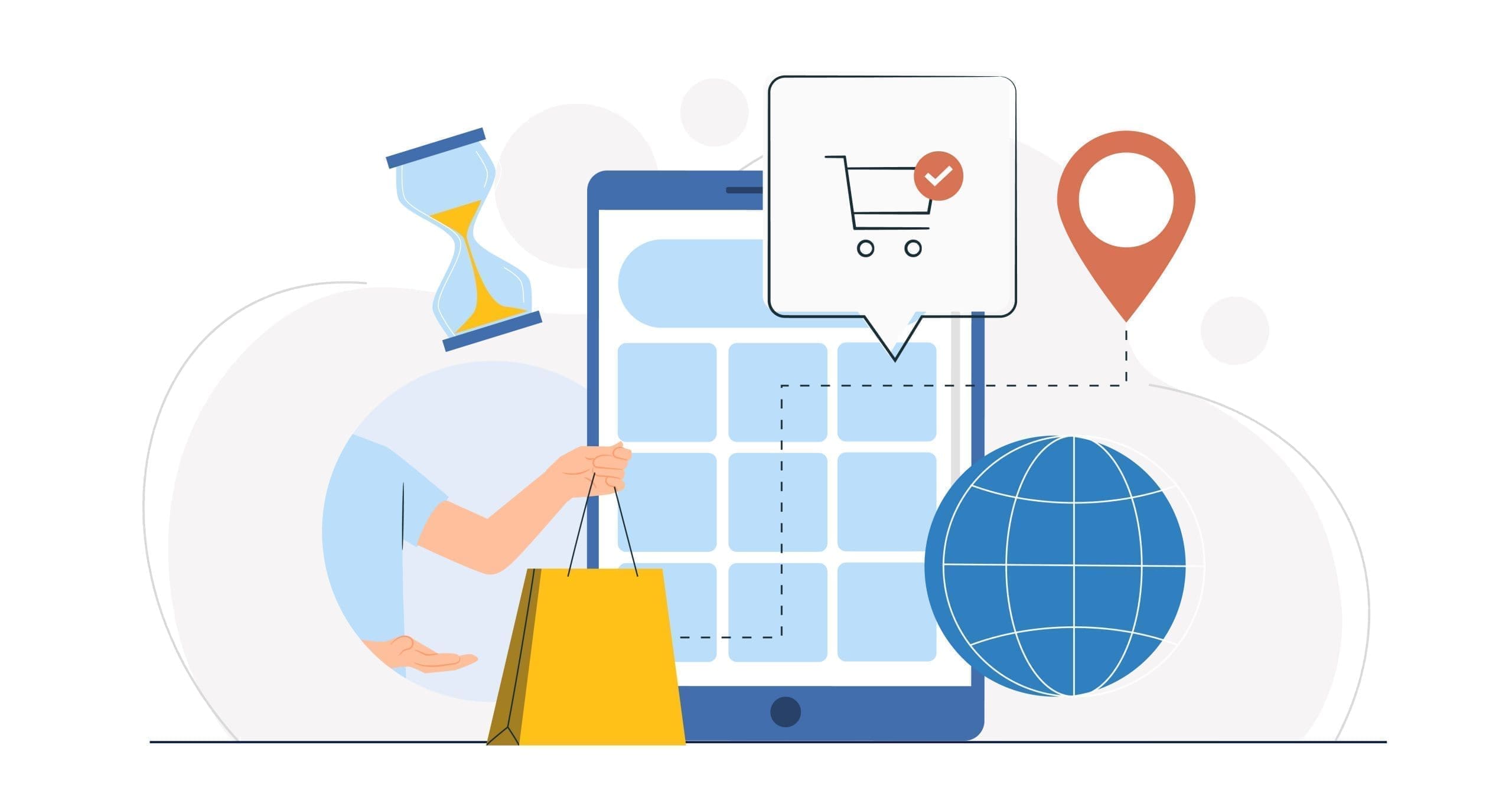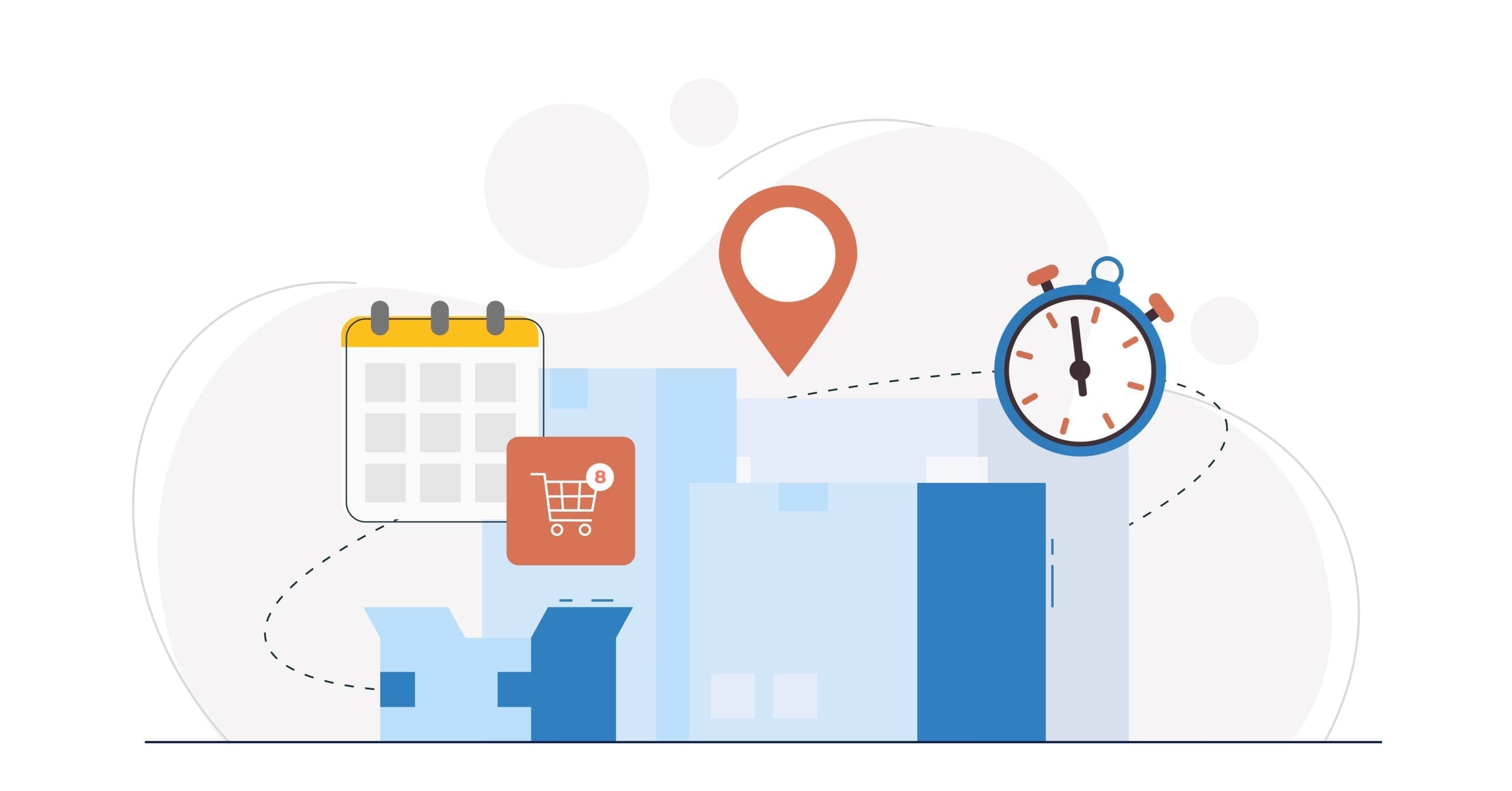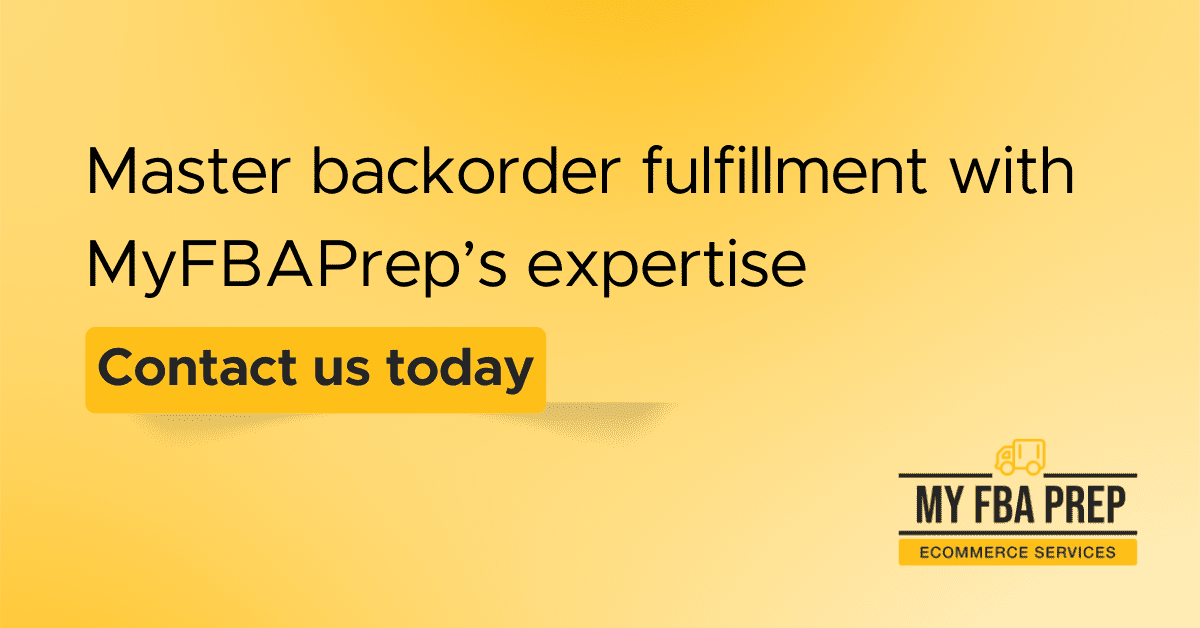
How to Manage Backorders

Demand is high. Orders are rolling in. Yet, stock levels are at zero and the warehouse shelves are empty. What do you do? Sell through and ship items later, or put all orders on hold until stock levels are replenished?
Selling products when you don’t have inventory can be a risky retail strategy. Implement a backorder strategy the right way and you’ll be able to successfully keep order numbers rising while waiting for stock to arrive.
Let’s explore everything you need to know about backorders: what they are, why they happen, and how to efficiently manage backorders and leverage their secret power for your eCommerce business.
What is a backorder?
Backorders refer to products that are temporarily out of stock and due to be replenished soon.
Selling products on backorder means you can capture a sale with the promise that customers will receive the goods as soon as stock levels have been replenished.
Backorders can happen for a variety of reasons (which we’ll dive into shortly) from unexpected demand to supplier delays.
Keeping track of your backorder rate is a great way to monitor the health of your inventory levels.
Calculate your backorder rate by dividing the number of undeliverable orders (due to temporary stock shortages) by the total number of orders, then multiplying the result by 100.
A high backorder rate indicates that demand often outweighs product availability, while a low backorder rate shows that you consistently have enough inventory to fulfill orders. Having some products on backorder can be a smart retail strategy for your store if managed efficiently. You’ve just got to find that sweet spot — too many backorders will upset your customers.
Backorders vs out-of-stock products: What’s the difference?
While backorders are products that are temporarily out of stock, the term backorder shouldn’t be confused with “out of stock”.
Products that are out of stock often don’t have a determined date for resupply. Out-of-stock products may be due to be replenished or they may be discontinued, never to grace your warehouse shelves (or customers’ orders) again. On the flip side, backordered products do have an expected restock date. This restock date is usually shared with customers so they know when to expect their order.
In short:
- Out of stock = not currently in stock with no set replenishment date
- Backorder = not currently in stock but has an expected replenishment data
Backorder vs backlog: What’s the difference?
The difference between backorders and backlogs is slightly more complex as backorders can be part of a backlog.
A backlog covers the total number of orders you have received but not yet shipped to customers. As you can see, this would include any orders that are on hold due to backorder.
Let’s say a customer places an order on the first day of the month, but it isn’t shipped until the last day of the month. That order will be placed on your backlog on the days in between ordering and delivery.
We know backorders happen due to products being ordered while temporarily out of stock. Meanwhile, backlogs refer to all orders that haven’t yet been shipped. This could be due to a myriad of reasons such as customers requesting later shipping dates, slower order fulfillment due to increased demand, or having products on backorder.
The risks and benefits of backorders
While it seems like a lucrative opportunity, retailers offering backorders need to tread carefully.
Lean inventory can be great for minimizing costs, waste, and resources. Go too lean with your inventory levels and you run the risk of stockouts, lost sales, and damaged customer relationships. You only have to look at the recent COVID-19 pandemic to know that retailers using just-in-time (JIT) inventory management were hit hard by supply and demand shocks.
As well as putting yourself at risk of supply and demand shocks, backorders can also impact customer relationships. Longer than expected lead times could lead to order cancellations, damaging customer trust and driving them into the arms of your competitors. Order cancellations due to backorders could then lead to overstocks where you have more inventory than demand.
Backorders shouldn’t form the backbone of your eCommerce business. Rather, they should be strategically used to maintain order demand, even when you don’t have enough stock on hand.
Backorders are great when managed correctly. An efficient backorder strategy can support customer retention by allowing people to place orders while you’re in between stock. Backorders also maintain product hype by demonstrating demand. Add these factors to the ability to sell products before you have inventory, and you’re well on the way to increasing revenue with a well-managed backorder strategy.
Effectively managing backorders requires a careful balancing act of finding the optimal replenishment levels and frequency.
What causes backorders?
There are a number of reasons why backorders might occur. A supply chain delay is the overarching cause of backorder. Broken down, these supply chain delays could be caused by:
- Products selling better than expected: It can be hard to judge which products will perform best. If products sell better than expected, you may find yourself facing stock shortages while you replenish inventory.
- Supplier issues: Not everything is in your control. Supplier issues might happen due to natural disasters, material shortages, strikes, shipping issues, or compliance errors — to name a few reasons. These issues can also cause stock delays leading to backorders.
- Inefficient inventory processes: Not all inventory processes are made equal and some put you at higher risk of stockouts. Using inefficient inventory processes such as just-in-time inventory management could cause backorders due to understocking products.
- Unexpected product demand: Products can peak in demand for numerous reasons. Whether it’s due to a high sales period such as Black Friday and the holiday season or your product went viral on social media, unexpected product demand could lead to backorders if demand outweighs stock levels.
- Low safety stock levels: Safety stock levels are minimum stock levels designed to protect against stockouts. Miscalculating safety stock levels could cause that safety level to be lower than actual demand and, in turn, may lead to backorders.
Whatever the cause of backorders may be, it’s crucial you have strong backorder management processes in place.
How to manage backorders?
Make backorders a revenue-driving force for your eCommerce store by following our best practices for efficient backorder management.
Decide whether to offer backorders
First, decide whether you want to offer backorders. Selling products on backorder sounds like a dream retail strategy — customers can still purchase while you wait for the products to come in. In reality, it requires astute attention to detail and strong organizational skills.
When deciding whether to offer backorders, ask yourself if you have the capacity to stay on top of backorder processes. Make sure your inventory and order systems are able to handle backorders. Having a reliable method for keeping track of backorders will help prevent order delays, cancellations, or even forgetting to ship backorders to customers.
You’ll need to have a pulse on accurate product restock dates and product demand too. Offering backorders is a numbers game where you balance incoming and outgoing stock against current and expected orders. You will also need to run a tight fulfillment and replenishment strategy to keep up with backorder demands.
Estimate the lead time for backorders
You shouldn’t offer backorders if you can’t accurately predict when the orders will be shipped.
Backorders are ideal for maintaining order volume while waiting for supplier inventory restocks. But your customers aren’t going to wait forever. Selling products on backorder without an estimated lead time can be frustrating for customers. If they’re buying something online, they want to know when they’ll receive the goods.
Work with your suppliers to calculate the expected lead times for products. You can then decide whether it’s worthwhile offering backorders on a product-by-product basis. People may be willing to wait longer for investment items such as a new sofa or a designer handbag. These products could have back order lead times of 12 weeks or more. However, they may be less willing to wait for impulse purchases. Offering long lead times on impulse purchase items could result in high order cancellation or returns rates.
Estimate the lead time for all products in your inventory and determine if it’s a viable strategy before letting customers order products on backorder.
Anticipate order demand
Order demand ebbs and flows. Some products may sell consistently throughout the year while others experience peaks and troughs. Winter woolies, for example, will experience increased demand in the colder months.
Understanding the expected order demand throughout the year allows you to carefully forecast high purchase periods. You can then work out when you might need to put a strong backorder strategy in place. Offering backorders helps you handle spikes in order demand, especially unexpected ones. You’ll be able to retain customer orders, knowing that they’ll be shipped out on longer lead times.
Anticipating order demand throughout the year also helps you maintain accurate safety stock levels. You can adjust safety stock levels depending on the expected order volume. That way, you only need to offer backorders when you receive an unexpected increase in orders.
Prepare for backorders
There are a few things you can do to prepare for backorders and ensure your backorder strategy only kicks it when absolutely necessary.
We always recommend diversifying your supplier network. Having more suppliers you can pull from for product replenishment can reduce your chance of backorders. If you do need to offer backorders, you can contact your suppliers to see who can fulfill the backorders in the shortest turnaround time. Be mindful of the increased cost implication of smaller order volumes from backup suppliers.
Offering alternative shipping methods can also offer protection in the event of backorders. Let customers split their order so in-stock items are shipped immediately while they wait for backordered products to arrive at a later date. This minimizes frustration by ensuring customers still get the rest of their order. However, retailers offering split-shipping will incur two separate shipping costs which they can choose to absorb or pass on to customers.
Increasing production is another way you can prepare for backorders by keeping unexpected stockouts at bay. Make sure you have a sufficient amount of inventory to cover high-demand sales periods. That way, you can keep backorders to a minimum. After all, every purchase on backorder adds additional strain to your eCommerce fulfillment processes.
Add any backorder information to product listings
Be upfront about backordered products by adding backorder information to product listings. Transparency creates trust with your customers and prevents avoidable friction and frustration.
Add the expected lead time for backorder products on product listings. Make sure it’s easy for customers to see which products are available for immediate shipment and which ones will have longer lead times due to backorders.
Keep customers informed
Keep customers informed about their order status with emails and SMS messages. Send them order update emails and messages letting them know when they can expect to receive their orders.
This could include notifications letting them know:
- The expected delivery window for their order
- The arrival date of the products in the warehouse
- When the order has been processed for delivery
- The order is out for delivery
- An updated expected delivery time
Keeping customers informed every step of the way protects your relationship with the customer, building a circle of trust.
Making sure your customers know when to expect their orders also helps mitigate the negative effects of order delays. Delivery issues are the leading cause of customers detracting from brands. So, keep delivery woes at bay by keeping customers in the loop at all times.
Maintain accurate inventory records
Streamline inventory processes and keep real-time records of all inventory operations. Keep tabs on everything from current inventory levels to order backlogs. You need to know how much inventory you have available versus how much inventory you need to fulfill current and expected customer orders.
Accurate inventory records allow you to keep on top of all incoming orders, making sure you have enough stock to fulfill purchases. You can also check inventory records to see when you need to re-order stock from suppliers to cover backorders or maintain safety stock levels. Every backorder you receive is another unfulfilled order you need to manage. If you want to effectively offer backorders, you need to run a tight ship.
You can also use inventory records to forecast future stock demands and explore your current backorder rate. Analyzing your inventory records lets you optimize processes moving forward.
Optimize fulfillment operations
Don’t let your backorder strategy fail at the last hurdle. Ensure your fulfillment operations are equipped to handle backorders.
Backorders can result in periods where you have a large influx of orders that are put on hold until a set date. As soon as inventory is available, those orders in the backlog will need efficiently fulfilling to make sure they reach customers in the anticipated delivery window.
Fulfilling backorders can be a time and resource-exhaustive task. You may need to bring on extra warehouse staff to support with backorder fulfillment or outsource fulfillment to an experienced third-party fulfillment partner.
At MyFBAPrep, we’re ready to support retailers with our seamless fulfillment services. Simply send your inventory to us and we’ll handle the order fulfillment from start to end. You’ll even get real-time insights into inventory and orders.
Wrapping up — Learn how to handle backorders and avoid losing customers
Backorders can be a lucrative revenue driver for your store but only when handled with care. When implemented correctly, backorders can maintain the flow of incoming orders and boost customer satisfaction with transparent communication.
Fail to finetune your backorder management operations and you run the risk of upsetting customers and putting strain on your inventory, fulfillment, and accounting. It’s a dangerous situation for any retailer to be in.
Create a clear action plan for handling backorders and you’ll be able to retain customers and keep them satisfied. Preparation really is the key to survival when managing backorders.




